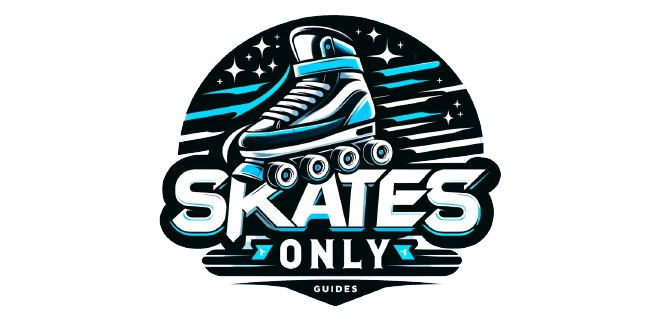Learning to stop efficiently and safely while roller skating not only enhances your skating skills but also prevents injuries, making your skating sessions more enjoyable.
This guide covers how to stop on roller skates and offers actionable insights and tips for skaters of all levels.
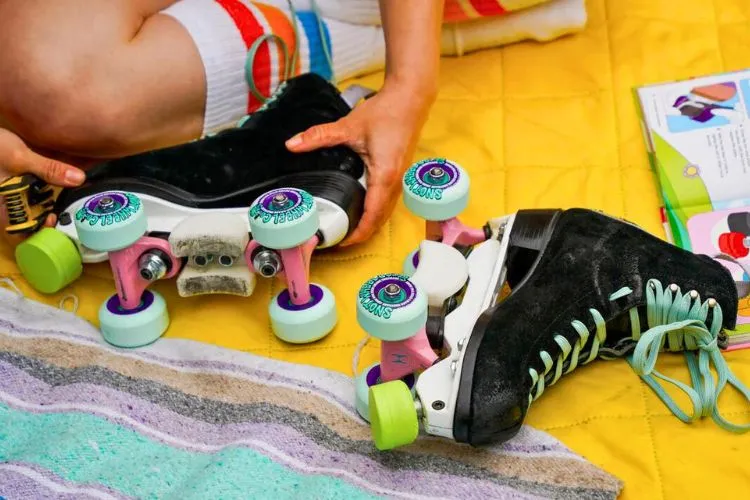
Pre-Stopping Considerations
Before you dive into the mechanics of stopping on roller skates, it is crucial to ensure that your skates are in good working condition. Check that the wheels spin freely and that the toe stops are secure and not overly worn down.
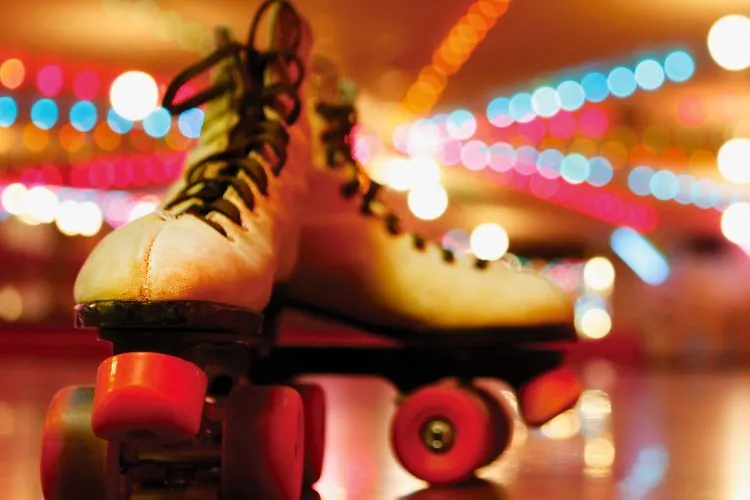
Wearing protective gear such as helmets, knee pads, and wrist guards is also advisable, especially if you are still mastering your stopping techniques.
How to Stop on Roller Skates?
The Plough Stop
The plough stop is one of the first stopping techniques that beginners should learn. It involves spreading your legs and bending your knees slightly inward while pushing out on your skates to create resistance against the floor.
Start slowly and gradually increase your pressure until you come to a stop. One common mistake is not bending the knees enough; keeping them flexible helps maintain balance and control.
The T-Stop
For the T-stop, one skate is placed perpendicular behind you, acting as a brake, while the other skate continues in front. This technique requires a bit of balance and strength in the thighs.
Ensure your heel does not make contact with the ground to avoid tripping. Using the flat of the back skate offers the most resistance and reduces wear on the wheels.
The Toe Stop Drag
The toe stop drag is straightforward yet effective. While rolling forward, lift one foot slightly and press the toe stop into the ground. Keep your weight on the standing leg. This technique allows for quick stopping and is ideal for situations where you need to halt suddenly.
The Powerslide
The powerslide stop is more advanced and involves turning sideways quickly, using both skates to slide and thus reduce speed.
Practicing this move requires an understanding of weight distribution and agility to ensure safety and effectiveness. Start with slow speeds and build confidence gradually.
You may also find useful: Inline Skates vs Quad Skates: Choosing the Best Ride for You
Practice Drills for Stopping
Practicing is key to mastering stopping techniques. Simple drills such as rolling towards a line and stopping before you reach it can greatly improve your precision and confidence.
Practice different stopping techniques each session to develop a versatile stopping skill set that you can use in various situations.
Tips from the Pros
Experienced skaters suggest practicing stopping on different surfaces to understand how your skates react.
They also recommend focusing on posture and balance, as these are crucial for executing stops safely. A common pro tip is to stay relaxed; tension makes it harder to balance and react quickly.
Common Stopping Problems and Solutions
Many beginners struggle with stopping due to underdeveloped balance and control. If you find yourself stumbling when attempting to stop, focus on strengthening your core and lower body muscles, which play a significant role in stabilizing your movements. Additionally, ensure your skates fit properly as poor fitting skates can impede your ability to stop effectively.
Maintaining Your Skates for Effective Stopping
Regular maintenance of your skates is critical for effective stopping. Clean your bearings often, inspect the toe stops and replace them if they show excessive wear. Tight wheels offer less maneuverability which is important for executing sharper stops.
Gear and Safety Equipment
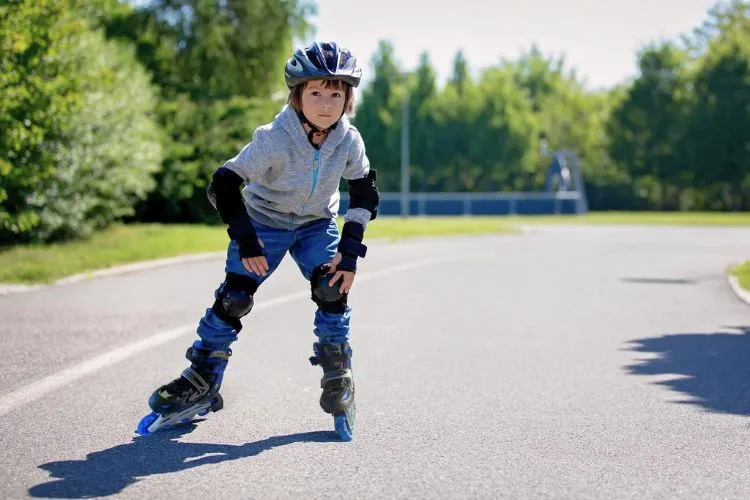
Assessing the Right Gear for Effective Stopping
Choosing the right gear is crucial for mastering stopping techniques on roller skates. The type of skates you wear can significantly impact your ability to stop efficiently and safely. Skates with a lower center of gravity offer more stability, which is essential for beginners learning to stop.
The hardness of the wheels also plays a significant role; softer wheels provide more grip on outdoor surfaces, aiding in safer stops, whereas harder wheels are better suited for smooth, indoor surfaces.
The condition and type of toe stops or brakes are also vital, with adjustable toe stops allowing for customization according to the skater’s preference and stopping style.
Essential Safety Equipment
Safety gear is non-negotiable when it comes to roller skating, especially for beginners or when practicing new stopping techniques. A helmet is the most critical piece of safety equipment, protecting against head injuries in falls or collisions.
Wrist guards are essential for protecting your wrists during falls, which are common when you’re still mastering your stops. Knee pads and elbow pads shield these joints from scrapes and severe injuries.
For those practicing aggressive skating or advanced stopping techniques, padded shorts can offer additional protection. Ensuring your safety gear fits correctly is as important as wearing it, as poorly fitted equipment can lead to discomfort and distraction, affecting your ability to stop effectively.
Exercises to Improve Balance and Strength
Balance and strength are foundational to executing controlled stops on roller skates. To fortify these, integrate exercises that target your core and leg muscles into your routine.
Planks are excellent for building core stability. They not only reinforce the abdominal muscles but also engage the back and shoulders, fostering a balance that is crucial for skating.
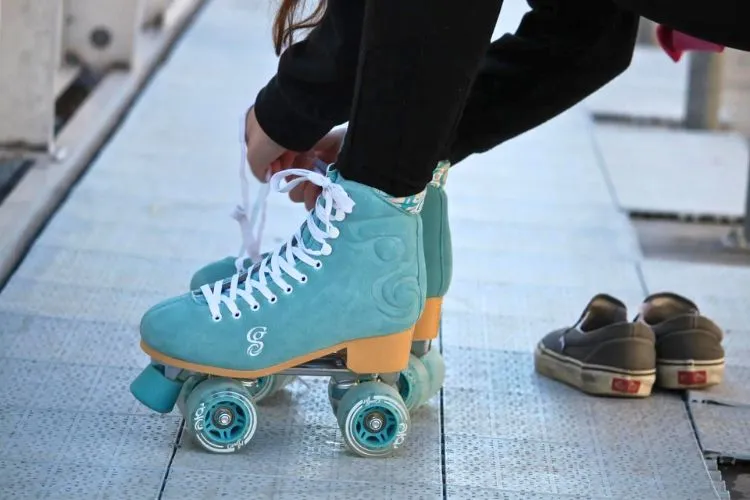
Squats and lunges work the entire lower body, increasing strength and stability in the thighs and glutes, which are imperative for stops like the plough and T-stop. Single-leg exercises, such as pistol squats, challenge balance and build leg strength asymmetrically, mirroring the one-legged nature of certain stopping techniques.
Calf raises not only strengthen the calves but also improve ankle stability, essential for maintaining control during stops. Lastly, exercises on a balance board or Bosu ball can simulate the instability of roller skating and help improve your reflexive balance skills.
By regularly practicing these exercises, you can develop a stronger, more stable base, significantly enhancing your stopping ability on skates.
Frequently Asked Questions (FAQs)
What are the most common mistakes when learning to stop on roller skates?
The most common mistake is not using the correct posture. Skaters often either lean too far forward or too upright.
How long does it typically take to learn how to stop effectively?
It varies depending on the individual’s practice frequency and skating background, but most can see basic improvement within a few weeks.
Are there any stopping techniques for downhill skating?
Downhill stopping techniques include the T-stop and plough stop, both of which offer good control when descending slopes.
Conclusion
Regular practice and proper maintenance of your roller skates are fundamental to mastering various stopping techniques. With patience and persistence, you’ll be able to stop confidently and safely, making your skating experience both enjoyable and secure.
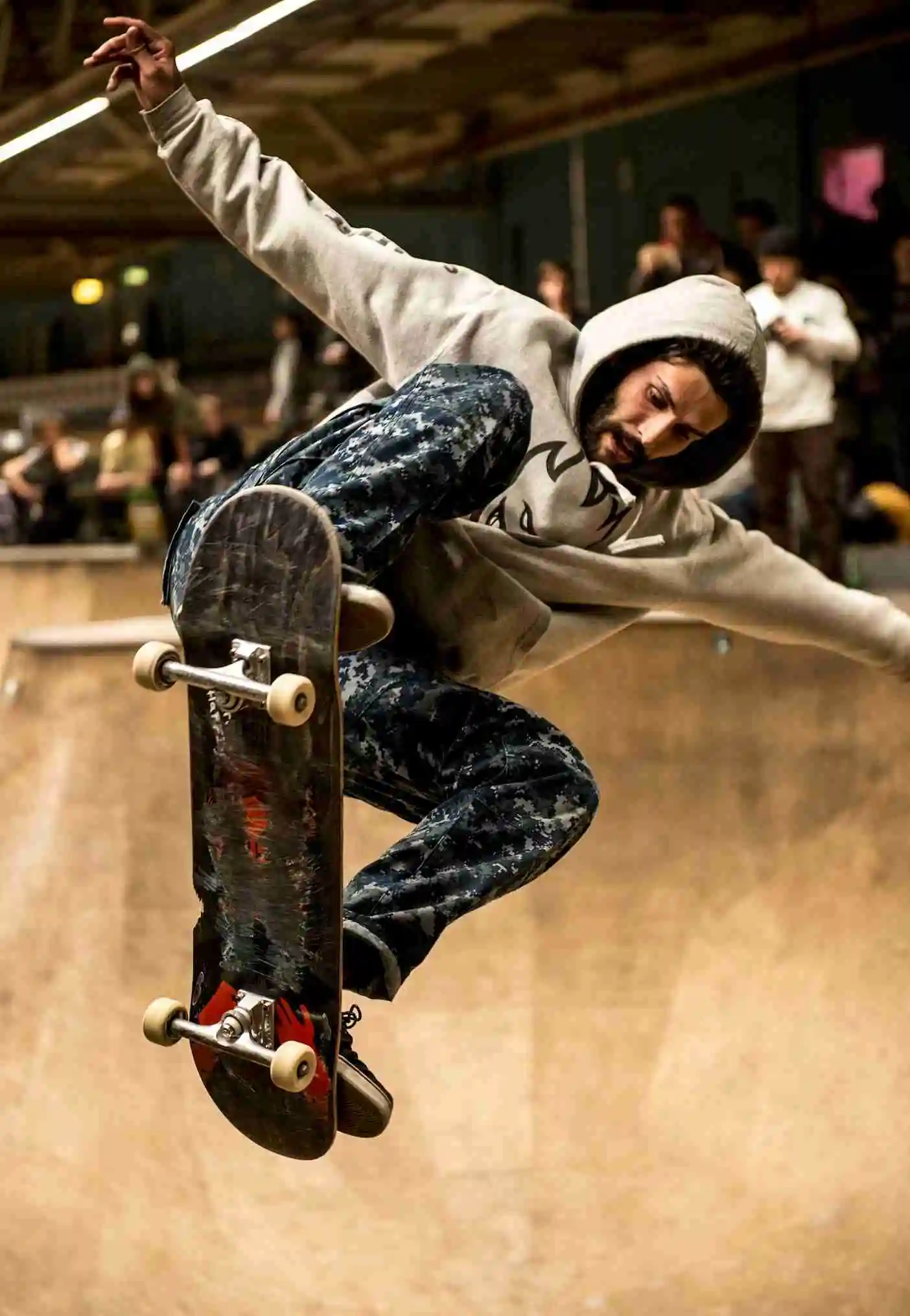
Matthew James is a passionate skater who wanted to create a platform to share his love for skating with others. With a vision to create a vibrant community of skaters, he aims to provide a space where skaters of all levels can connect, learn, and grow together.
